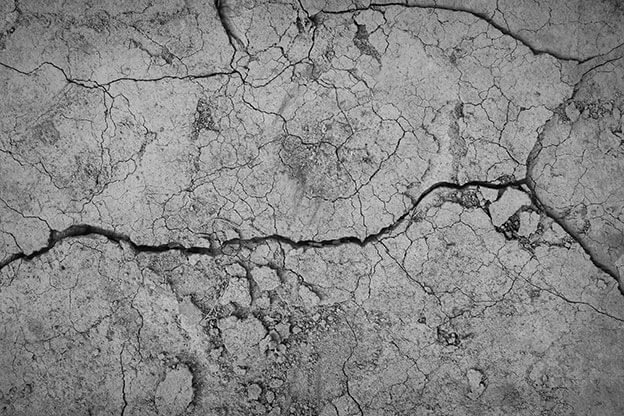
A colloquial term for a number of defects found in concrete, concrete cancer is serious business and needs to be dealt with as soon as it is detected. The best method, however, is prevention.
What is concrete cancer?
When buildings are constructed, concrete is reinforced with bars or mesh made of steel. After being exposed to air and water, however, this steel corrodes, forcing it to expand, and the surrounding concrete to crack. The cracking, known as spalling, undermines the strength of the building.
The term ‘cancer’ is used because of the nature of the corrosion. The cracks further expose the steel to the elements, which speeds up the level of corrosion, advancing the problem further and faster.
While many people believe that as concrete surrounds the steel means it cannot corrode. However, concrete is a porous material meaning it absorbs the elements around it. Further, buildings that have not been waterproofed, or worse have been poorly waterproofed, are likely to suffer from concrete cancer as they do not have the sufficient protection in place. For buildings near the ocean, chlorides from salt water can enter the concrete, even after it is built, and corrode the steel. Another cause of corrosion occurs when a building has defects which leave the concrete and the supporting steel vulnerable.
And of course, there are environmental factors, such as the natural movement of the earth underneath the building. This can cause natural cracks which exposes the steel to the elements, and can also allow water to enter the building from the ground. Weather can also be a factor, especially in colder climates, as water can freeze on the surface and then melt, allowing the water to easily enter the concrete.
A major cause of concrete cancer is the concrete itself, which is why older buildings seem to suffer so much more than recently built ones. While at the time of construction, the concrete used was often thought to be top of the range, the materials used may not be appropriate. It’s also important to remember that the environment and climate have changed since a lot of older buildings were built, and the materials and concrete used may no longer be appropriate to handle the conditions.
What are the signs?
Most structural engineers will be able to spot concrete cancer before you can. However, they’re not always on hand, so it pays to know the tell-tale signs that it may be time to get in the experts.
- Cracking or crumbling concrete
- Rust stains that seem to come out from the concrete
- The concrete render starts to bubble
- Roof leaks or any that appear in internal walls
While people often mistake these signs as general wear and tear, they can be signs of something much more sinister.
Preventing the issue
The best cure for concrete cancer is preventing the issue entirely and there are things you can do early on to help avoid the problem getting worse.
Waterproofing
Waterproofing is the best preventative measure to take against concrete cancer. High quality Wolfin or Cosmofin waterproofing membranes will keep water leakage to a minimum as they are extremely resistant to tears and punctures as well as having exceptional elongation properties to move with the structure. Not to mention that both methods are guaranteed to have a long life and can cope with testing weather conditions. If you don’t have waterproofing in place, or worse have had poor-quality waterproofing work done, the structure will be more susceptible to concrete cancer and therefore more likely to spread and wreak havoc.
Other methods
- If you spot any standing water issues, fix these immediately. The same goes for internal leaks and drips. Any water that is getting into the building may be going through the concrete which can be a major problem if you leave it alone. Fix it straight away and you may be out of the woods.
- As soon as you spot a crack, deal with it. It’s unlikely you’ll be able to deal with it yourself so find someone who knows how to seal it. In the short term, this means the supporting steel will not be exposed to the elements.
- Just like you, buildings need regular check-ups. Find someone who will come regularly to seal the concrete. This will protect from any water damage and general wear and tear.
Of course, there are also much bigger fixes out there, and most are preventative measures. For example, there’s the idea of changing internal reinforcements completely to a material that is resistant to corrosion, such as bamboo. While this will only work in some places around the world, it is a start.
Another option is painting the concrete. Many paints on the market are specifically designed to resist chloride. If you’re near the ocean, this may be your best option as it will lower the risk of the saltwater causing corrosion.
Fixing the issue
While it’s all well and good to say prevention is the best cure, sometimes no matter what we do, concrete cancer appears anyway. So what can be done to fix the issue once it has occurred?
Generally, the spoiled concrete needs to be broken away so all loose material is removed. The rusted steel will be removed and new steel will be welded to the unspoiled old steel. This is generally the most cost-effective solution. New concrete will then be poured and usually, it is poured with extra thickness so the new steel is reinforced. The new concrete is then coated with waterproof membranes for some added protection.
But remember, the experts will be able to guide you as to the best course of action. Ensure that before making any decisions that you contact a structural engineer to assess the situation and provide advice on how to fix the problem. Once this is fixed you can contact Projex Group if you require a good waterproofing solution to ensure concrete cancer does not occur again.